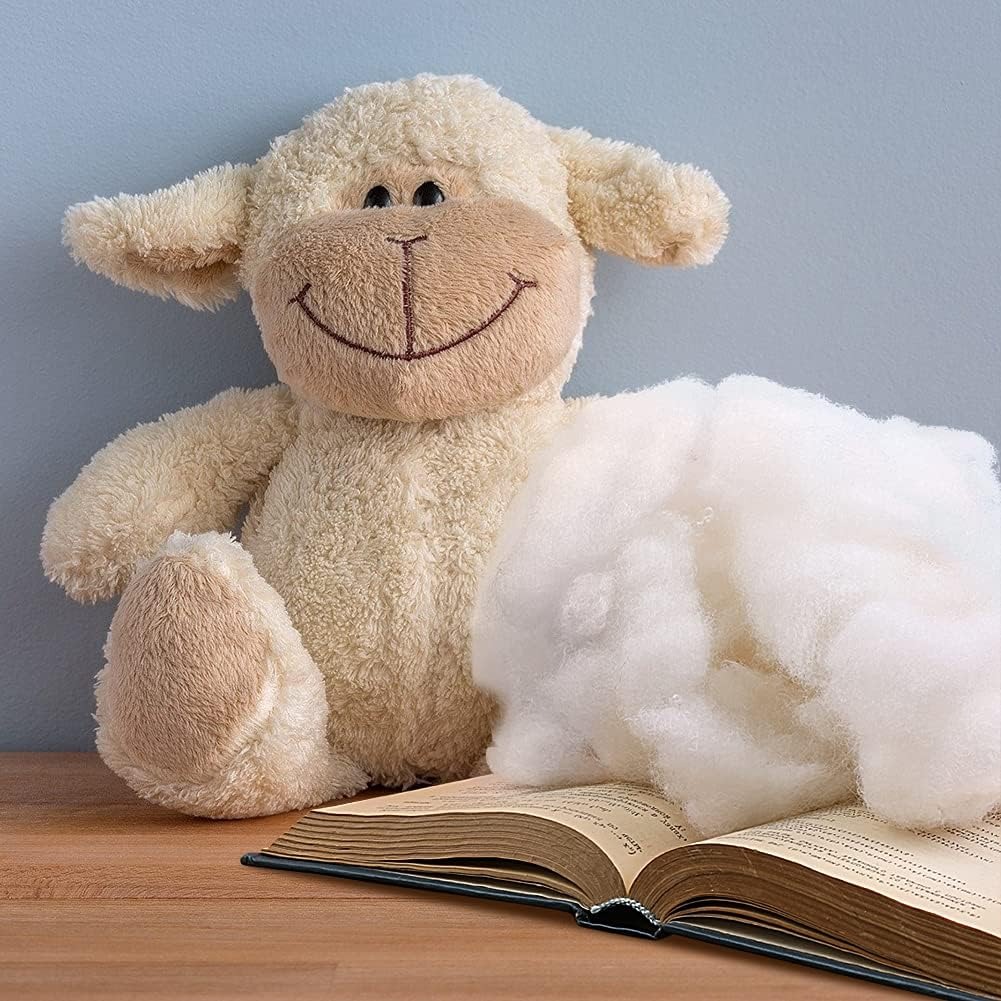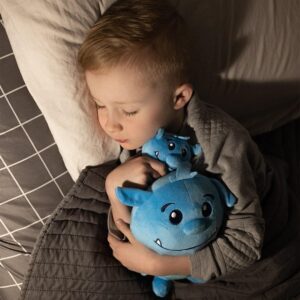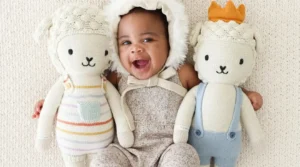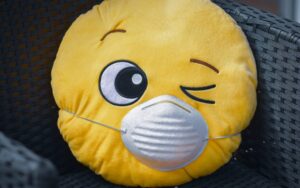Soft toys have been a beloved companion for children and adults alike, offering comfort, joy, and a touch of magic to everyday life. But have you ever paused to wonder what materials go into making these cuddly friends? The choice of material isn’t just about softness — it impacts safety, durability, environmental footprint, and even the toy’s feel and look. Understanding these materials can help you pick the perfect plush that lasts and feels just right.
Summary: Soft toys are primarily made from fabrics like polyester, cotton, plush, and velboa, combined with fillings such as polyester fiberfill or cotton stuffing. Material choices influence softness, durability, safety, and eco-friendliness, making them essential for quality plush toys.
Imagine a child clutching their favorite teddy bear — that soft feel and durability didn’t happen by chance. Behind every plush toy lies a carefully selected mix of materials designed to delight and endure. Ready to dive into the world of soft toy materials and discover what makes these cuddly creations truly special? Let’s unpack the story.
1. What Are the Common Materials Used to Make Soft Toys?

Soft toys are usually made from a variety of fabrics, including synthetic fibers like polyester and natural fibers such as cotton. Plush fabric, velboa, and fleece are among the most popular choices because of their softness and texture. The combination of fabric and filling defines the toy’s feel, appearance, and resilience.
Common fabrics for soft toys include polyester plush, cotton, and velboa, each offering unique textures and durability suited to different needs.
- Polyester Plush: The most widely used fabric, polyester plush is soft, durable, and easy to clean. It holds colors well and is relatively inexpensive, making it a favorite in mass production. However, it’s synthetic and less breathable than natural fibers.
- Cotton: Natural and breathable, cotton offers a gentle feel but can wear out faster. Organic cotton is gaining popularity for eco-conscious consumers.
- Velboa: A short-pile fabric, velboa mimics fur and is velvety to touch. It’s denser than plush and often used for realistic animal toys.
- Fleece and Minky: Ultra-soft, fuzzy fabrics popular in premium and baby toys. They provide warmth and a luxurious feel but can be more delicate.
- Natural vs. Synthetic Debate: Natural fibers are preferred for their breathability and eco-friendliness, but synthetic fibers score higher on durability and cost-efficiency. The best choice depends on the end-user’s priorities, whether that’s longevity, softness, or environmental impact.
Each fabric tells a different story, from budget-friendly toys to luxury keepsakes. The secret is balancing softness, durability, and care requirements. If you want custom designs that meet your specific needs, reach out to Kinwin to explore tailored options.
| Fabric Type | Description | Key Features | Pros | Cons | Typical Use Case |
|---|---|---|---|---|---|
| Polyester Plush | Soft, durable synthetic fabric, widely used | Holds color well, easy to clean | Affordable, durable | Less breathable than natural fibers | Mass-produced soft toys |
| Cotton | Natural, breathable fiber | Gentle feel, eco-friendly options | Soft, biodegradable | Wears out faster | Eco-conscious and baby toys |
| Velboa | Short-pile fabric mimicking fur | Dense, velvety texture | Realistic look, durable | Heavier than plush | Realistic animal plush toys |
| Fleece & Minky | Ultra-soft, fuzzy fabrics | Warm and luxurious feel | Very soft, premium feel | More delicate | Premium and baby plush toys |
| Natural vs Synthetic | Comparison of fiber types | Breathability vs durability trade-off | Natural is eco-friendly | Synthetic is less breathable | Depends on product priority |
2. Which Materials Are Best for Safe and Eco-Friendly Soft Toys?

Eco-friendly and safe soft toys often use organic cotton, bamboo fabric, or recycled polyester. These materials avoid harmful chemicals and reduce environmental impact, meeting certifications like OEKO-TEX and GOTS.
Organic cotton, bamboo fabrics, and recycled polyester are top choices for eco-friendly, non-toxic soft toys certified for safety and sustainability.
- Organic Cotton: Grown without pesticides, organic cotton is gentle on skin and environment-friendly. It biodegrades naturally but tends to cost more due to farming practices.
- Bamboo Fabric: Known for softness and antimicrobial properties, bamboo fabric is sustainable and renewable, though production methods vary in eco-impact.
- Recycled Polyester: Made from post-consumer plastic bottles, recycled polyester helps reduce landfill waste and fossil fuel use but still is a synthetic material.
- Certifications to Watch: OEKO-TEX Standard 100 ensures textiles are free from harmful substances. GOTS certifies organic status and eco-friendly manufacturing. Choosing certified materials guarantees consumer safety and responsible production.
- Trade-offs: Some sustainable fabrics may not be as durable or may require special care, so balancing eco-friendliness with practical use is key.
The move towards green materials is growing fast. If your brand prioritizes sustainability without compromising quality, Kinwin can help you source the perfect materials and create customized, certified plush toys.
| Material | Description | Key Benefits | Certifications | Trade-offs / Considerations | Typical Use Case |
|---|---|---|---|---|---|
| Organic Cotton | Grown without pesticides | Skin-friendly, biodegradable | GOTS | Higher cost, requires careful farming | Eco-friendly, baby toys |
| Bamboo Fabric | Soft, antimicrobial, renewable | Sustainable, naturally antibacterial | Varies (look for eco-certificates) | Production methods vary in eco-impact | Sustainable plush toys |
| Recycled Polyester | Made from post-consumer plastic bottles | Reduces landfill waste, fossil fuel use | OEKO-TEX Standard 100 | Synthetic fiber, less breathable | Eco-conscious mass production |
| Certifications to Watch | Textile safety and sustainability standards | Ensures non-toxic and organic status | OEKO-TEX, GOTS | Important for consumer trust | All safe, eco-friendly toys |
| Trade-offs | Balance between sustainability and practicality | Durability vs eco-friendliness | N/A | Some fabrics need special care | Depends on brand priorities |
3. How Do Different Filling Materials Affect the Quality of Soft Toys?

Fillings such as polyester fiberfill, cotton stuffing, beans, and beads impact softness, shape retention, and safety. Polyester fiberfill is most common for its lightness and hypoallergenic properties.
Polyester fiberfill, cotton stuffing, and plastic pellets influence softness, durability, and safety; polyester fiberfill is the preferred hypoallergenic filling for plush toys.
- Polyester Fiberfill: Lightweight, resilient, and hypoallergenic, it’s ideal for children’s toys. It maintains shape well and dries quickly after washing.
- Cotton Stuffing: Natural and breathable, cotton filling is heavier and less resilient but preferred for natural product lines.
- Plastic Pellets (Beans): Used to add weight or texture, pellets improve tactile experience but can pose choking hazards if the toy is damaged.
- Beads and Foam: Sometimes combined with fiberfill for varied texture and firmness.
- Safety Considerations: Fillings should be non-toxic and securely contained to prevent accidental ingestion. Washability and durability also influence filling choice.
Selecting the right filling is critical for the toy’s comfort, longevity, and safety. At Kinwin, we provide expert advice to customize fillings to your exact product goals.
| Filling Material | Description | Key Benefits | Safety Considerations | Typical Use Case |
|---|---|---|---|---|
| Polyester Fiberfill | Lightweight, resilient synthetic stuffing | Hypoallergenic, maintains shape, quick-drying | Non-toxic, widely used for kids’ toys | Most common filling for plush toys |
| Cotton Stuffing | Natural, breathable fiber | Eco-friendly, soft | Heavier, less resilient than polyester | Natural product lines |
| Plastic Pellets (Beans) | Small plastic beads to add weight/texture | Improves tactile feel, adds weight | Choking hazard if toy is damaged | Weighted plush or tactile toys |
| Beads and Foam | Used with fiberfill for texture/firmness | Adds variety in firmness and feel | Secure containment essential | Specialty plush toys |
| Safety Considerations | Non-toxic, securely enclosed fillings | Prevent ingestion risks, durable | Critical for children’s safety | All children’s soft toys |
4. Are There Specialized Materials for Different Soft Toy Applications?

Yes. Toys designed for infants require hypoallergenic, ultra-soft fabrics and safe fillings, while collectible plush may prioritize detail and texture. Some outdoor plush require waterproof or stain-resistant fabrics.
Infant toys need hypoallergenic, soft fabrics; collectible plush focus on texture; outdoor toys use waterproof or stain-resistant materials.
- Infant Soft Toys: Use ultra-soft fabrics like minky or organic cotton and hypoallergenic fillings. Safety regulations here are strict.
- Collectible Plush: Often incorporate luxurious fabrics such as velboa or specialty faux fur for realism and aesthetic appeal.
- Outdoor and Travel Plush: Waterproof coatings, stain resistance, and durable stitching are vital for toys exposed to rough conditions.
- Flame-Retardant Fabrics: Required in some markets for added safety, especially in daycare or institutional settings.
- Regulatory Compliance: Different regions impose varying safety standards on materials, influencing material choices.
Understanding your target market’s needs is crucial. Kinwin helps design and produce toys tailored to specific uses, ensuring compliance and performance.
| Application Type | Material Characteristics | Key Features | Safety & Compliance | Typical Use Case |
|---|---|---|---|---|
| Infant Soft Toys | Ultra-soft fabrics (minky, organic cotton), hypoallergenic fillings | Gentle, safe, highly breathable | Strict safety regulations, non-toxic | Baby and infant plush toys |
| Collectible Plush | Luxurious fabrics (velboa, specialty faux fur) | High detail, realistic texture | Less strict but focus on aesthetics | Collectors’ editions, decorative plush |
| Outdoor & Travel Plush | Waterproof coatings, stain-resistant fabrics, durable stitching | Weather-resistant, easy to clean | Must withstand rough usage | Travel toys, outdoor plush |
| Flame-Retardant Fabrics | Special fabrics treated to resist flames | Fire safety compliance | Required in certain markets (daycare, institutions) | Institutional and daycare plush |
| Regulatory Compliance | Varies by region and application | Safety standards affect material choice | Ensures toy safety and market access | All regulated plush toy markets |
5. Do Material Choices Affect the Longevity and Maintenance of Soft Toys?

Absolutely. Fabrics and fillings determine how well a toy resists wear, stains, and washing. Durable synthetic fabrics tend to last longer, while natural fabrics may need gentler care but offer breathability.
Material choice impacts toy durability, stain resistance, and ease of cleaning, affecting overall lifespan and maintenance needs.
- Durability: Polyester fabrics resist abrasion better, prolonging toy life. Natural fibers may fade or wear faster but feel softer initially.
- Cleaning: Machine-washable fabrics and fillings make maintenance easier. Some delicate fabrics require hand washing.
- Stain Resistance: Synthetic fibers typically repel stains better. Protective coatings enhance longevity.
- Wear and Tear: Filling material influences how well the toy holds shape after repeated use and washes.
- User Lifestyle: Toys for active children require tougher materials; decorative or collectible toys may tolerate delicate fabrics.
By choosing the right combination, you ensure your soft toys remain cherished for years. Kinwin’s expert team can guide you through material selection to optimize product lifespan and customer satisfaction.
| Factor | Impact on Longevity & Maintenance | Details | Typical Considerations |
|---|---|---|---|
| Durability | Synthetic fabrics (polyester) resist abrasion better | Natural fibers softer but wear faster | Choose based on use scenario |
| Cleaning | Machine-washable materials ease maintenance | Delicate fabrics may require hand wash | Consider user lifestyle |
| Stain Resistance | Synthetic fibers repel stains better | Protective coatings improve longevity | Important for children’s toys |
| Wear and Tear | Filling affects shape retention after use | Quality fiberfill maintains form better | Critical for longevity |
| User Lifestyle | Active users need tougher materials | Decorative toys can use delicate fabrics | Match materials to target users |
6. What Innovations Are Emerging in Soft Toy Materials?

New eco-friendly fabrics, antimicrobial treatments, and smart textiles are transforming the plush toy industry, offering enhanced safety, sustainability, and functionality.
Innovations include sustainable fabrics, antimicrobial coatings, and smart textiles that improve toy safety, hygiene, and eco-friendliness.
- Bio-Based and Recycled Fabrics: Manufacturers are adopting fabrics from renewable sources and recycled plastics to reduce environmental footprint.
- Antimicrobial and Odor-Resistant Treatments: Special coatings prevent bacteria growth, keeping toys fresher and safer, especially for children.
- Smart Textiles: Emerging technologies enable toys that can respond to touch, light, or sound, enhancing interactivity.
- Flame-Retardant Eco-Materials: Combining safety with sustainability is an ongoing challenge and focus area.
- Consumer Demand: Buyers increasingly seek products that align with health, environmental, and technological trends.
| Innovation Type | Description | Key Benefits | Industry Impact | Typical Applications |
|---|---|---|---|---|
| Bio-Based & Recycled Fabrics | Fabrics from renewable sources and recycled plastics | Reduces environmental footprint | Drives sustainability goals | Eco-friendly plush toys |
| Antimicrobial & Odor-Resistant Treatments | Coatings that prevent bacterial growth and odors | Enhances hygiene and safety | Improves toy longevity and freshness | Children’s toys, healthcare plush |
| Smart Textiles | Fabrics integrated with responsive technologies | Adds interactivity (touch, light, sound) | Creates innovative user experiences | Interactive plush toys |
| Flame-Retardant Eco-Materials | Materials combining fire safety with sustainability | Meets safety regulations and eco-standards | Balances safety and green manufacturing | Institutional plush, daycare toys |
| Consumer Demand Trends | Growing interest in health, environment, and tech | Pushes material innovation | Influences product development | All plush toy categories |
Stay ahead by embracing these innovations. Contact Kinwin for custom plush toys made with the latest materials tailored to your brand’s vision.
In summary, selecting the right materials for soft toys is a nuanced process that balances softness, safety, sustainability, durability, and innovation. Whether you’re designing plush toys for children, collectors, or niche markets, understanding these factors ensures your products delight customers and meet global standards.
Ready to bring your plush toy ideas to life with premium materials and expert craftsmanship? Reach out to Kinwin today to start customizing your next bestseller.










